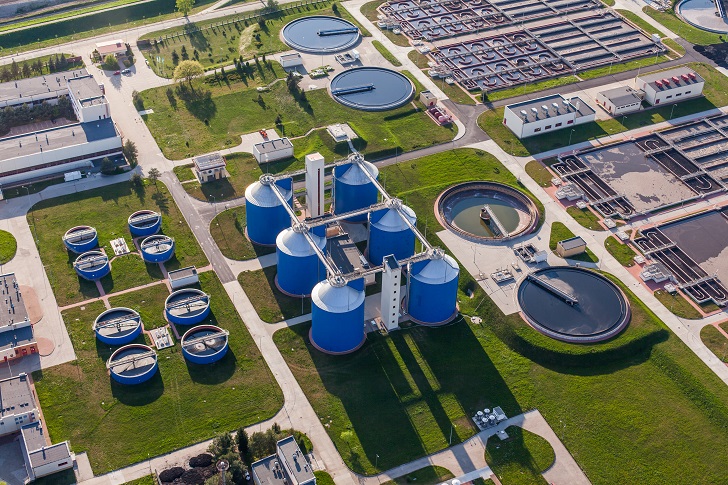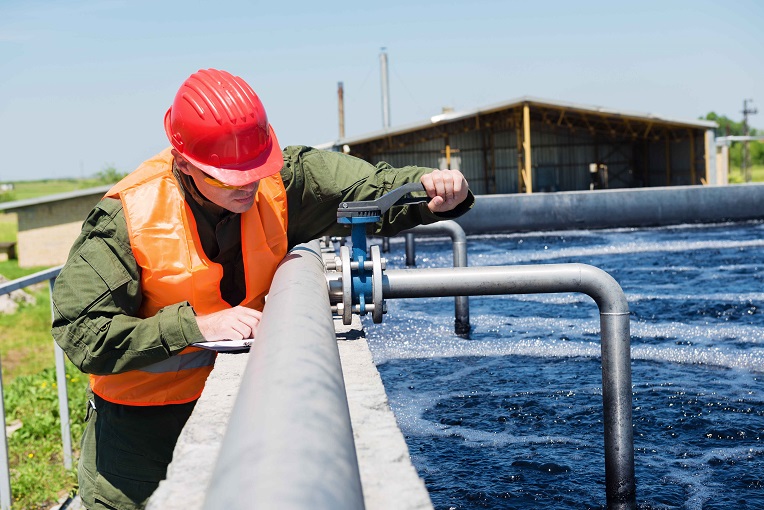

Without correct water management, half of the Netherlands would be flooded. Although its water industry may be well developed, process improvements can still be made. This article looks at how water companies can use digitalization to meet strict regulations.
There are several regulations that Dutch water companies must adhere to. Both national and EU regulations strictly control the cleanliness of the water that is put back into the water system. For example, the European Drinking Water Directive specifies a total of 48 microbiological, chemical and indicator parameters that must be monitored and tested regularly to meet the standard.
While some of the standards are set lower than the European Drinking Water Directive, for substances such as boron, bromate and fluoride, the Dutch national legislation adds several other substances to monitor such as Cryptosporidium and Polychlorobiphenyls. This means that overall, the water quality in The Netherlands is internationally recognised as being particularly high.
To meet these standards, water companies must ensure that they have strict procedures in place to meet the regulatory standards. While the water infrastructure in the Netherlands is particularly developed, there are still improvements that can be made to help the water companies effectively feedback this information to the government.
Need for monitoring One of the key challenges in the Dutch water industry is outdated equipment that makes it difficult for water companies to collect the information required across the treatment process. A 2017 report by the Rijksinstituut voor Volksgezondheid en Milieu stated that “in order to take preventative actions [against harmful contaminants in the sources of drinking water], it is necessary to monitor possible hazardous contaminants through the water supply chain.”
The same report stated that while most Dutch drinking water companies are improving their operational monitoring and management, stricter controls may be brought in in the future. Rather than monitoring for a concentration of 1 microgram per litre, the report suggests that the value may be lowered to 0,1 microgram per litre in the future. While this increased control may be some time away, it’s vital that the Dutch water companies, from all aspects of the water supply chain, consider their reporting procedures.
However, they are often stunted by outdated equipment. Across Europe, the water industry is plagued with ageing infrastructure. There are numerous pieces of equipment used in the sanitisation process of water, as well as the pumps and vessels used to get the water around the plant. However, if the equipment is not able to be connected to an overarching control system, the plant loses the opportunity to collect important data.
Updating equipment Even in a country with a water infrastructure as well funded as The Netherlands’, it is still difficult for water companies to update all their equipment in one go. Instead, water companies must draw up a plan of the processes that they want to be able to monitor better.
Once they have completed this plan, they can upgrade equipment that allows them to do this. For example, infrastructure managers may decide to first invest in connected equipment to help them feedback the level of contaminants at each stage of the purification process.
Once the equipment has been updated and there are plethora of connected devices reporting information, it is necessary to control these using an overarching control system to control and gather this information. This will allow the infrastructure manager to make actionable decisions and share this information with authorities when necessary.
Reporting While water companies have kept manual records of contaminant levels for decades to comply with reporting legislation, this is not the most efficient way of doing this.
All water companies must follow strict quality control procedures internally and report to the Regional Public Health Inspector (RHI), at least on an annual basis. If concerns are raised at any point about the safety of drinking water, the water company must be able to provide supporting data within a short period, so any outbreak can be traced effectively.
When using manual data collection, it is time consuming to log the data, import it into spreadsheets and print the records. Due to the amount of human involvement in the process, mistakes could easily be made, or the historic data may be lost if not correctly filed.
To meet the regulations of the water industry, it is essential that water companies use a control system that allows them to manage this data effectively.
Managing data If water companies invest in equipment to help them to collect data throughout the water purification process, it is worthless without a SCADA system that can collect and manage the data.
Not only will the SCADA system give the plant manager more awareness and control over the processes in the water treatment plant, it will allow the regulatory information to be safely collected and stored.
By using a SCADA system such as Novotek’s iFix automation software and digitising the collection of important data, this will reduce the time taken collecting the data manually and reduces the likelihood of human error. The information can then be displayed in a clear report, alerting the plant manager to any discrepancies. When required, the report can then be sent to the regulatory authorities.
Historic data As historic data is so valuable in the water industry, it is ideal for plant managers in this industry to also use an information system that can gather, archive and compress large amounts of data. If any problem is detected much later in the water treatment process, having this large volume of data available will make it much easier to identify the origin of the contaminant.
Having a large amount of data available through investing in better sensors and automation equipment across a water treatment plant will help plant managers to have a better awareness of their industry. However, without the right SCADA system and historic information system, such as GE Historian, the investment in the connected devices is worthless.
With water management being so important in The Netherlands and the water industry leading the way in Europe, it is likely that regulatory control will increase to ensure the country retains its reputation for some of Europe’s cleanest drinking water.
Water treatment plant and infrastructure managers need to make sure that their plant uses an up-to-date control system that is relevant to the digital age to manage their data, to ensure that they can be one step ahead of any future regulatory changes.





